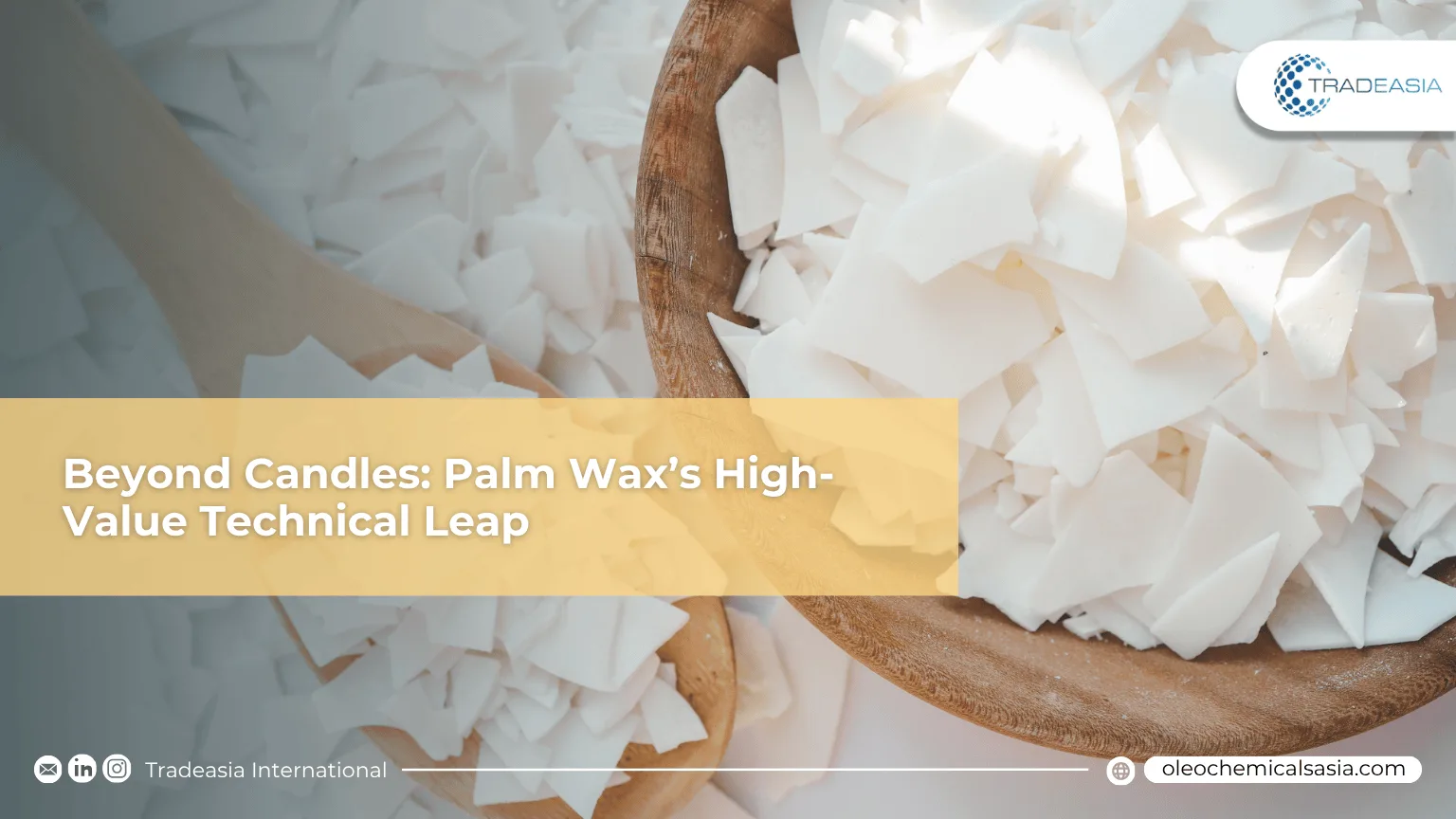High-Value Evolution: Sustainable Palm Wax’s Technical Leap Beyond the Candle Market

Table of Content
- Advanced Applications Driving Market Demand
- The Climate Data Competitive Advantage
To view Sustainable Palm Wax only through the lens of candle-making is to miss the strategic, high-value opportunities emerging in Q4 2025. This highly versatile derivative is leveraging its certified sustainability and superior technical properties to become a critical bio-intermediate across sophisticated industrial applications, including high-performance coatings, cosmetics, and new green technologies. This diversification is the core of its long-term market viability and its growing role in the Industrial Wax Market, which is projected to reach USD 14.2 Billion by 2030, growing at a 4.4% CAGR.
As a trusted partner in connecting raw materials to innovative applications, Tradeasia International provides the logistical certainty that fuels this industrial evolution. We believe that “sustainable growth is not just about planting a seed; it’s about nurturing the entire ecosystem that allows it to flourish.” This philosophy drives our commitment to sourcing materials that offer superior performance alongside ethical standards. The demand for these advanced derivatives is supported by the Oleochemicals industry, which projects a robust CAGR of 6–7% through 2030, according to industry outlooks. This ensures a stable supply of the necessary feedstock.
Advanced Applications Driving Market Demand
The technical merits of palm wax are driving its adoption in the Industrial Wax Market. Its use in the cosmetics and personal care segment is particularly strong, where natural waxes are replacing petroleum-based ingredients. Furthermore, palm wax derivatives, such as Hydrogenated Palm Stearin (HPS), are essential in non-luminous applications, offering superior binding and stabilizing properties. This technical innovation extends to unexpected sectors, such as traditional crafts, where the successful launch of environmentally friendly Batik Wax derived from sustainable palm oil directly links corporate supply chains to Micro, Small, and Medium Enterprises (MSMEs). This initiative is a powerful demonstration of the economic ripple effect of certified sourcing, extending far beyond the typical industrial profit center.
The Climate Data Competitive Advantage
For industrial buyers, procurement is increasingly focused on quantifiable environmental benefit. Sustainable Palm Wax delivers on this front. Cumulatively, RSPO-certified members have achieved a reduction in Greenhouse Gas (GHG) emissions equivalent to 567,734 cars since 2015. This is a powerful data point that industrial buyers can directly integrate into their own Scope 3 emissions reporting, using the materials as a direct route to climate mitigation. Finally, the market is signaling clear preference: the candle segment is projected to hold the largest market share in the industrial wax market, confirming that demand for high-quality palm wax remains foundational. By focusing on certified palm wax, businesses are not just selling a commodity; they are providing a compliant, high-performance material essential for achieving modern corporate ESG goals and unlocking growth in specialized segments.
Sources:
-
Oleochemical Market Outlook: September 2025 Trends and Opportunities (https://www.oleochemicalsasia.com/market-insights/oleochemical-market-outlook-september-2025)
-
Global Industrial Wax Market Size & Forecast [Latest] (https://www.marketsandmarkets.com/Market-Reports/industrial-wax-market-197935975.html)
-
Our impact - Roundtable on Sustainable Palm Oil (RSPO) (https://rspo.org/our-impact/)

Leave a Comment